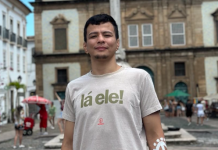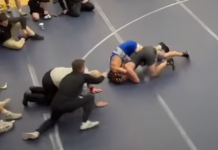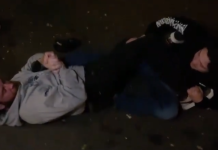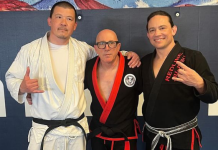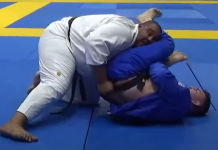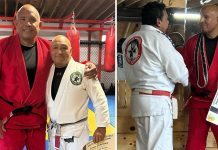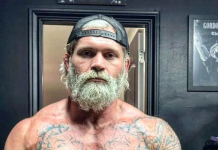Rener Gracie is tired. He is tired of the “use-of-force pandemic that is plaguing America.”
With twenty years of teaching both civilians and law enforcement under his belt, he is tired of making breakdown after breakdown of police brutality videos only to be sent more cases of the same thing occurring over and over. Little is being done, police officers as a whole are still grossly under-trained for the demands of their job, and the videos keep coming. Certain states mandate that officers need only train 4 hours of hand-to-hand combat a year, the State of California requiring four hours once every two years. Departments rarely budget to provide more than this mandated amount, and police officers are the ones left to suffer in the long run.

“Police training in this country is an absolute disaster,” says Rener. “Of the four-hour mandates, it’s not all hand-to-hand combat. Some time is spent on the use of force policy, suspect searches, and restraint devices.”
“State mandates are not going to solve this problem that has our country in flames right now.”
The problem is clear, but what about the solution?
As Rener presents in a full hour-and-a-half presentation, he has approached many police chiefs asking what their plan is and they simply come back with ‘none’. He thus set out to make real change, crafting together a concrete formalized plan that empowers police departments to partner with local jiu-jitsu academies to provide tactical training all within the scope of incentivizing police officers to train. The best part; this would be completely funded by the cities, and many police chiefs are already jumping on board.
Through countless conversations with police around the nation, he has found that the biggest challenge facing departments when it comes to providing on-site combat training is the liability, the fear of a Worker’s Compensation claim precludes many departments from proceeding forward with providing any type of regular training on-site. It can be summarized by two acronyms used commonly by officers: Injury on Duty (IOD) and Reduced Officer Presence (ROP).

Simply put, police aren’t training in order to save money for the city.
“They use excessive force when they probably didn’t need to because of their limited training,” he discusses. “Not only do officers get beat up because they don’t have the training, even if it’s justifiable the question is ‘is it necessary.’ They’re over-reliant on their tools because they have no hands-on skills.”
What’s interesting, as he discovered through many conversations with police officers, is an understanding of how police departments incentivize performance. Police receive promotion points and pay raises on different performance metrics, among them their physical fitness capabilities and their firearms marksmanship. Much akin to a jiu-jitsu rank system, there exists a hierarchy based on proficiency with a firearm, even going so far as to have different badges worn on police uniforms to indicate a respective skill level. Many officers wear their badge with great pride as they are not easy to attain.
Beyond any pay bonuses or promotional incentives, police are inherently incentivized to be highly proficient with a firearm as a way to avoid a situation where they commit a murder that could have been avoided with a better understanding of non-violent control tactics. This means not being a part of a viral video and working to achieve a good rapport with the public.
One hour a week is a realistic and appropriate number that Rener discusses needs to be the mandated minimum for police officers. He proposes a pay incentive tiered system for 100, 200, 300, and 400 hours of training jiu-jitsu, partnering with private jiu-jitsu schools in the area that teach from the Gracie Survival Tactics curriculum therefore providing an opportunity to serve the officers in their community, while having the city pay for it.
Where does the money come from, especially in the midst of a call for some departments to be defunded?
He points out that there are numerous different budgets that most every department possesses, including but not limited to a Police Training budget, an Officer Wellness budget, a Risk Mitigation budget, and a Community Relations budget. Most departments only draw money for hand-to-hand combat training from the Police Training budget, whereas a gym membership comes from the Officer Wellness budget. A case can be made that given that jiu-jitsu training would undoubtedly make officers more safe on-the-job, posing less of a danger to the public, thereby causing less of a litigation risk for the cities they serve, jiu-jitsu training can be paid for in part by the Risk Mitigation budget. One can not discount the ancillary benefits in interacting with the outside community as well. Training at a privately owned academy while off-duty enables officers to directly interact with the citizens they serve, therefore the Community Relations budget is another place to look for the funds. In short, the money is there if you know where to look for it. The advantage for the cities and departments to partner with private jiu-jitsu academies is less off-site staff, more quality instruction, less overhead, and no workers compensation liability.
“There is incredible precedent when it comes to institutions both federal, state, and local partnering with private business to accomplish a unified objective. This is very normal,” he discusses. “We’re talking about gym membership. This is just plugging into that precedent.”
With departments already on board, jiu-jitsu medals being made, a proven police survival tactics curriculum already deployed, and a network of schools that continues to grow, there appears to be hope that there can be real improvements made in the nationwide quality of training for police officers.
Watch the full presentation here:
Watch the summarized presentation here where Rener speaks directly to police chiefs:






